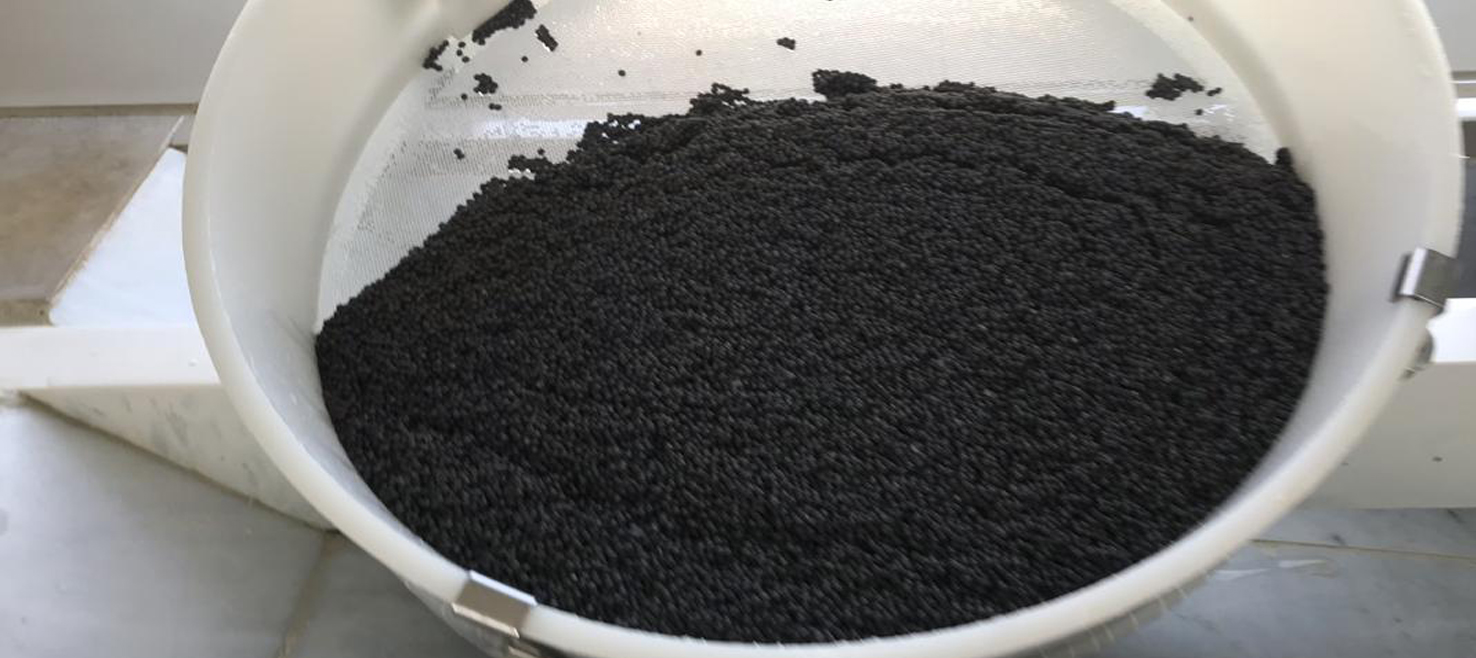It is at this stage that the processing methods overlap for commercial fresh and farmed caviar. The fish are rapidly stunned, and the two ovaries are removed by a process called “stripping” that extracts the caviar through a small incision in the fish wall. Alternatively, the caviar can be extracted by performing a cesarean section, which can then be stitched up, allowing the female to continue producing roe. The third process for removal of the roe is by massaging the eggs out of the fish.
The very fragile eggs are then chilled and gently removed by hand from the membrane by rubbing the eggs against a mesh screen. The tissue is then removed for composting. The eggs are next rinsed repeatedly with cold water to wash away impurities, broken eggs, and membrane residues. Additional removal of crushed eggs and impurities is achieved by manual removal, using tweezers. The pure eggs are then poured into a fine mesh colander to remove the water. The caviar is then weighed carefully and salted. Very fine salt is used in the process, and its addition is critical for optimal flavor and shelf life of the caviar. Lightly salted caviar is called “malossol” and has a salt content of less than 5%. Most high-quality caviar contains less than 3% salt. Caviar with a salt content up to 8% is called salted caviar or semi-preserved caviar, and its flavor is less fresh. If salt is added at greater than 10%, the product is called “payusnaya” and forms a jellylike cake that can be kept for three months.
The caviar is then chilled to allow it to absorb the salt for six minutes to several hours, after which it is drained again using a colander to remove water. After draining, it is dried further by carefully blotting it using a towel. Now the caviar is ready for packing. Lacquer-lined tins are commonly used and are hand-filled and pressed gently to remove air. Air causes oxidation and spoilage during storage. The tins are then sealed tightly.
Caviar is typically aged for three months. Aging is critical for the final product flavor and for caviar to develop subtle fragrance notes. Longer aging is sometimes used. Caviar is perishable and requires refrigerated storage. Fresh caviar can be stored for two to four weeks. Caviar can also be pasteurized to extend shelf life and allow for storage times of up to a year at room temperature. Pasteurization is known to reduce quality in terms of final product texture and flavor, but it improves food safety. Other caviar preservation methods include freezing and drying, both of which extend shelf life.
The largest area of innovation in terms of caviar in recent years has been the development of imitation, plant-based caviar, which is typically made from seaweed and can be enjoyed by vegetarians. Final product flavor and color mimic that of fresh caviar. It also lacks the cholesterol that is present in fresh caviar.
Another area of innovation for caviar is its use in cosmetics and health supplements. This area is growing rapidly.
The next time you enjoy caviar, please think of all that went into bringing this delicious delicacy to your table
